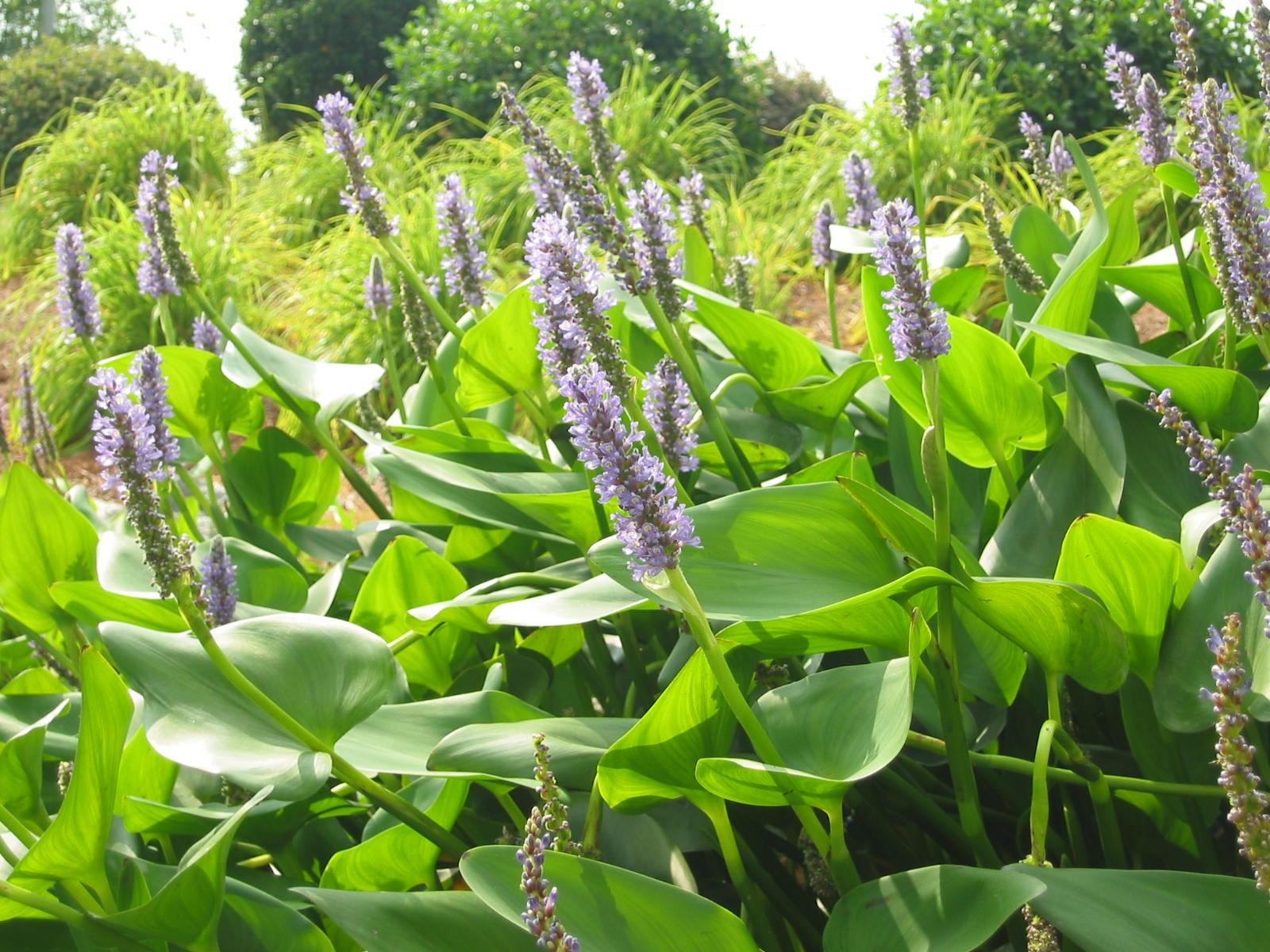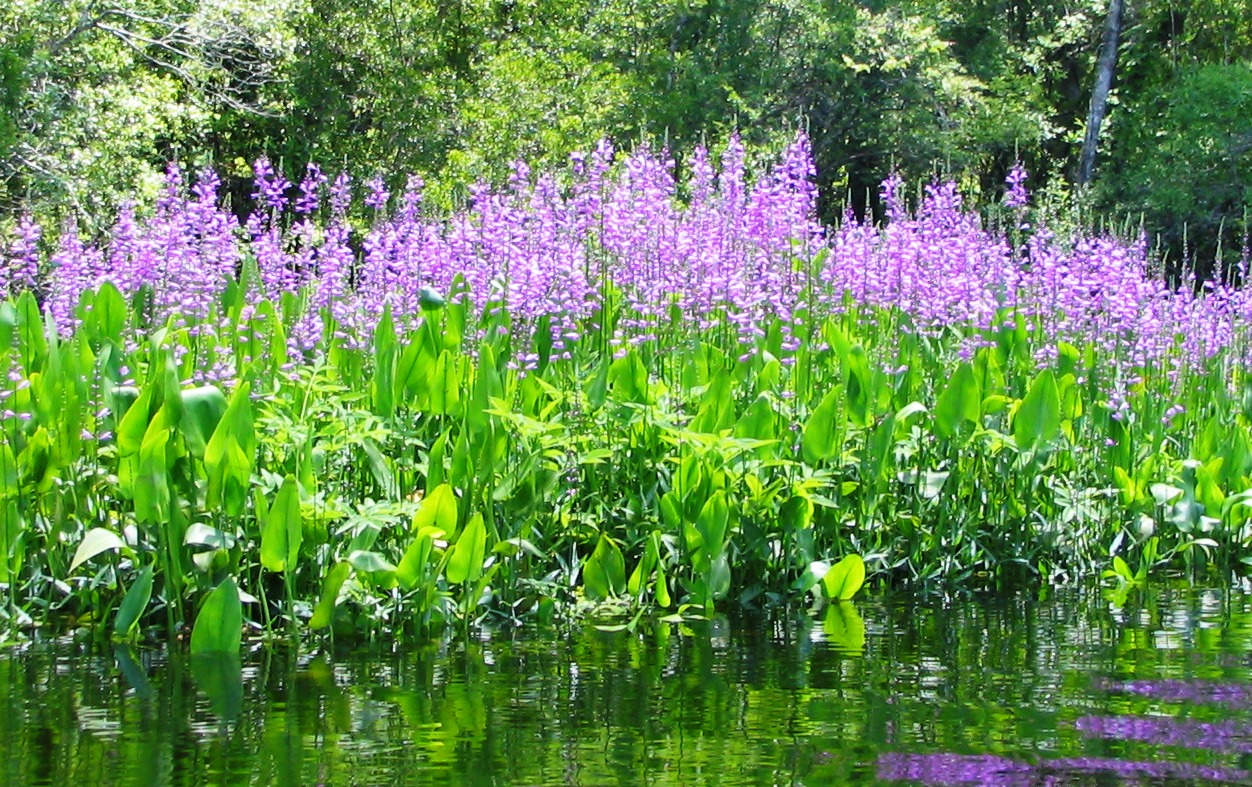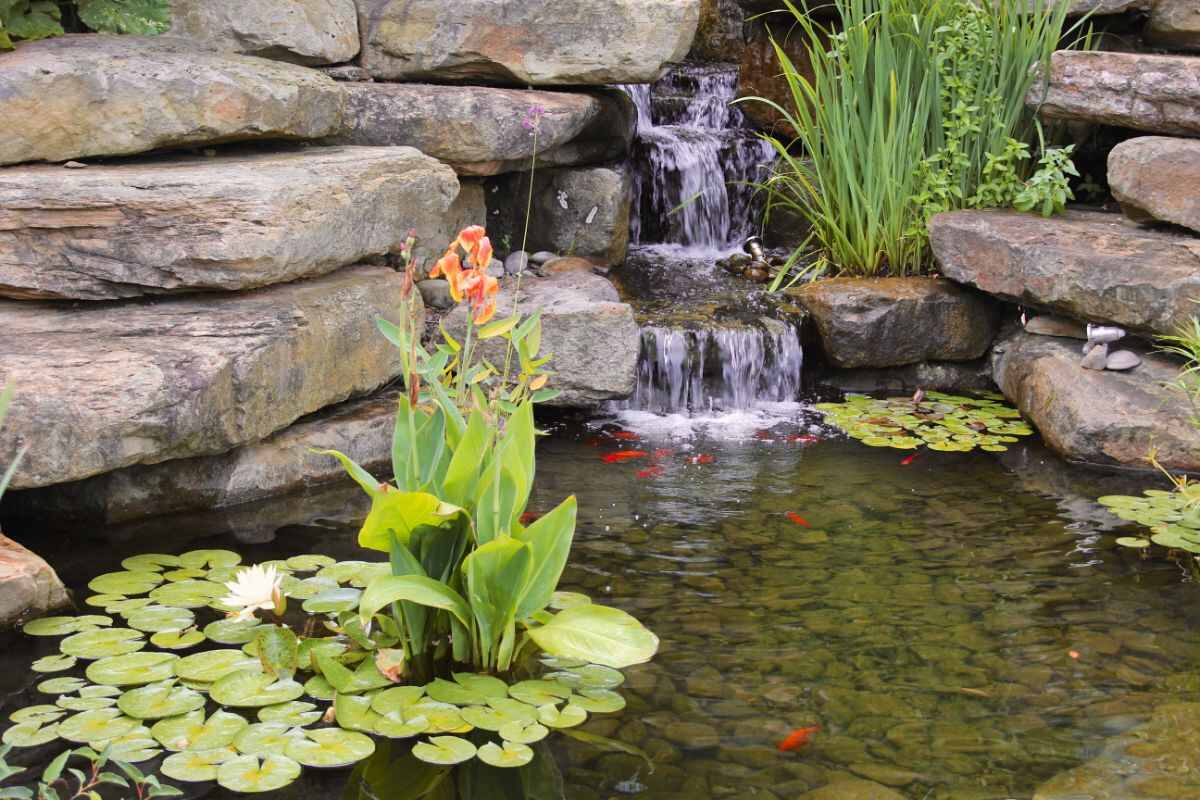If you have a pond in Florida or are planning to create one, choosing the right plants can make all the difference. The unique climate here means your pond plants need to handle heat, humidity, and occasional storms, while keeping your water clear and healthy.
You want plants that not only look beautiful but also help control algae, provide oxygen, and attract local wildlife. In this guide, you’ll discover the best pond plants for Florida that thrive in your environment and make your pond a vibrant, peaceful oasis you’ll love to enjoy every day.
Keep reading to find out which plants will transform your pond into a stunning natural retreat.

Credit: www.solitudelakemanagement.com
Florida Pond Plant Types
Florida’s warm climate and abundant water create ideal conditions for various pond plants. These plants not only beautify ponds but also support aquatic life. Choosing the right types helps maintain a balanced ecosystem and clear water. Florida pond plants fall mainly into three categories: marginal, submerged, and floating plants. Each type serves a unique purpose and fits different pond zones.
Marginal Plants
Marginal plants grow along the pond edges or in shallow water. They add color and texture while stabilizing pond banks. Popular Florida marginal plants include pickerel weed, Louisiana iris, and duck potato. These plants offer shelter for fish and attract birds and pollinators. They also help filter water by absorbing excess nutrients.
Submerged Plants
Submerged plants live entirely underwater. They oxygenate the pond and provide hiding spots for fish. Common Florida submerged plants include hornwort and coontail. These plants reduce algae growth by competing for nutrients. They also improve water clarity and create a healthy habitat for aquatic creatures.
Floating Plants
Floating plants rest on the water surface with roots hanging below. They provide shade and reduce sunlight penetration, limiting algae growth. Examples of Florida floating plants are water lettuce and water hyacinth. These plants also offer shelter for frogs and insects. Floating plants help keep pond water cool during hot days.
Top Native Plants
Native pond plants thrive naturally in Florida’s climate. They support local wildlife and keep ponds healthy. Choosing native plants helps maintain the ecosystem balance. These plants are easy to grow and need less care.
Pickerelweed
Pickerelweed grows well in shallow water. It has bright purple flowers that attract butterflies and bees. This plant helps clean pond water by absorbing nutrients. It provides shelter for small fish and frogs.
Duck Potato
Duck potato is a tall plant with large green leaves. It produces white flowers that turn into edible tubers. Ducks and other birds eat its tubers. Duck potato stabilizes pond edges and prevents erosion.
Louisiana Iris
Louisiana iris displays colorful blooms in shades of blue, purple, and yellow. It grows in wet soil or shallow water. This iris adds beauty to any pond setting. It attracts pollinators like bees and butterflies.
Carnivorous Pitcher Plant
The carnivorous pitcher plant traps insects in its tube-shaped leaves. It thrives in nutrient-poor, wet soils. This plant helps control insect populations naturally. Its unique shape makes it a fascinating pond addition.
Popular Exotic Choices
Exotic pond plants bring unique beauty and color to Florida water gardens. These plants thrive in warm climates and add a tropical feel to any pond. They also help keep the pond healthy by providing shade and oxygen.
Choosing exotic plants can turn your pond into a peaceful retreat. Here are some popular exotic choices that suit Florida ponds well.
Water Lilies
Water lilies are classic exotic plants with large, colorful blooms. Their leaves float on the water surface, creating shade. This shade helps reduce algae growth. Water lilies prefer full sun and calm water. They bloom from spring to fall, adding charm to your pond. Hardy and tropical varieties both do well in Florida.
Lotus
Lotus plants offer striking flowers and large, round leaves. They grow well in shallow pond areas. Lotus flowers open in the morning and close at night. Their roots help clean pond water by absorbing nutrients. Lotus plants need warm temperatures and plenty of sunlight. They bring an exotic, serene look to any pond.
Water Lettuce
Water lettuce floats on the pond surface with soft, green leaves. It forms dense mats that provide shade and shelter for fish. This plant helps control algae by blocking sunlight. Water lettuce grows quickly in warm climates like Florida. It prefers still or slow-moving water. Its unique texture adds softness to pond landscapes.

Credit: nwdistrict.ifas.ufl.edu
Plants For Water Clarity
Clear water is a sign of a healthy pond. Plants play a key role in keeping pond water clear in Florida’s warm climate. They help reduce algae and remove excess nutrients. Choosing the right plants improves water quality and creates a balanced ecosystem.
Nutrient Absorbing Plants
Certain plants take up nutrients from the water. These nutrients would otherwise feed algae. Examples include pickerel weed and water hyacinth. They absorb nitrogen and phosphorus efficiently. This limits algae growth and keeps water clear. Nutrient absorbing plants also provide oxygen to aquatic life.
Shading With Floating Foliage
Floating plants cover the water surface and block sunlight. Less sunlight means less algae growth. Water lilies and duckweed are good choices. Their leaves shade the pond and cool the water. This helps prevent algae blooms and keeps water clear. Floating foliage also offers shelter for fish and frogs.
Biofiltration Benefits
Some pond plants support beneficial bacteria in their root zones. These bacteria break down harmful substances in the water. Cattails and bulrushes are great biofilters. They improve water clarity by cleaning pollutants and trapping sediment. Biofiltration plants create a natural filter system for the pond.
Hardy Shrubs For Wet Areas
Hardy shrubs thrive in wet areas and add structure to Florida ponds. They tolerate soggy soil and occasional flooding. These shrubs improve water quality and provide habitat for wildlife. Choose native varieties for the best growth and care.
Anise
Anise is an evergreen shrub with aromatic leaves. It grows well in wet, shady spots near ponds. Its star-shaped flowers attract butterflies and bees. Anise also acts as a natural screen or fence. It reaches about 6 feet tall, fitting small spaces.
Sweetshrub
Sweetshrub is a deciduous shrub with fragrant, spicy flowers. It blooms in spring and summer with yellow to maroon petals. This shrub prefers moist soil and partial shade. It can grow up to 10 feet tall. Sweetshrub supports birds and pollinators in pond areas.
Buttonbush
Buttonbush is a native wetland shrub with unique round flower clusters. The white blooms appear in summer and attract hummingbirds. It can grow 6 to 12 feet tall and wide. Buttonbush thrives in standing water and helps prevent erosion.
Itea
Itea is a fast-growing shrub with slender leaves and hanging flower spikes. It blooms in late spring with white or pink flowers. This shrub tolerates wet soil and full sun to part shade. Itea grows 3 to 6 feet tall and adds graceful movement near water.
Designing With Pond Plants
Designing with pond plants transforms any water garden into a vibrant, living space. These plants provide structure, color, and habitat for wildlife. Thoughtful placement of pond plants enhances the natural beauty and health of your pond. Careful design helps balance the ecosystem and keeps the water clear. Using native plants suited for Florida’s climate ensures success and low maintenance.
Creating Natural Fences
Natural fences offer privacy and a soft border around the pond. Tall plants like cattails and pickerel weed form dense screens. These plants block unwanted views and reduce wind effects. Native shrubs such as buttonbush add height and attract birds. Positioning these plants along the pond edge creates a peaceful, enclosed feel.
Layering Plant Heights
Layering different plant heights adds depth and interest to the pond design. Use tall plants in the background for height and shelter. Mid-height plants like water iris fill the middle space. Low-growing plants and floating varieties soften the water’s surface. This layering mimics natural ponds and supports diverse wildlife.
Combining Colors And Textures
Mixing colors and textures creates visual excitement and contrast. Bright flowers like water lilies add pops of color. Broad leaves of lotus contrast with narrow, grassy plants. Varied leaf shapes and sizes bring texture to the pond edges. Combining these elements ensures the pond looks lively and well-planned year-round.
Maintenance Tips
Maintaining pond plants in Florida requires regular attention to keep them healthy and vibrant. Proper care helps prevent common issues and supports plant growth. Follow simple steps to manage your pond plants effectively throughout the year.
Controlling Algae Growth
Algae can quickly take over a pond and harm plants. Remove algae by hand or use a pond vacuum. Introduce algae-eating fish to help naturally control growth. Avoid excess feeding of fish to reduce nutrient buildup. Adding floating plants like water lilies shades the pond and limits algae growth.
Pruning And Dividing
Regular pruning keeps pond plants tidy and encourages new growth. Cut back dead or yellowing leaves to improve appearance. Divide plants every few years to prevent overcrowding. Use clean tools to avoid spreading disease. Dividing also helps plants stay strong and healthy.
Seasonal Care
Florida’s warm climate allows pond plants to grow year-round, but some care changes with seasons. In spring, add fertilizer to boost growth. Remove dead material in fall to prepare for winter. Protect tender plants from cold snaps by moving them to deeper water. Monitor water levels during dry months to keep plants hydrated.

Credit: www.lawnstarter.com
Frequently Asked Questions
What Plants Are Water Loving In Florida?
Water-loving plants in Florida include pickerel weed, duck potato, Louisiana iris, pitcher plant, anise, sweetshrub, buttonbush, and itea. These native species thrive in wet, shady areas and help maintain healthy pond ecosystems.
What Plants Keep Pond Water Clean?
Pickerelweed, Water Iris, and Arrowhead absorb excess nutrients. Hornwort and Waterweed oxygenate water. Water Lilies, Lotus, and Water Lettuce shade and reduce algae, keeping pond water clean and balanced.
What Plants Can Survive In The Heat In Florida?
Heat-tolerant plants in Florida include hibiscus, bougainvillea, crape myrtle, firebush, and coontie. These thrive in hot, humid conditions.
What Are The Submerged Aquatic Plants In Florida?
Submerged aquatic plants in Florida include Hornwort, Hydrilla, Eelgrass, and Coontail. They oxygenate water and support ecosystems.
Conclusion
Choosing the best pond plants for Florida boosts your pond’s beauty and health. Native plants like pickerel weed and Louisiana iris thrive well in wet conditions. These plants help keep water clean by absorbing excess nutrients. They also provide shelter for fish and other wildlife.
Adding a mix of floating, submerged, and marginal plants creates balance in your pond. Careful selection ensures your pond stays vibrant all year. Enjoy a lively, natural pond that fits Florida’s unique climate perfectly.

